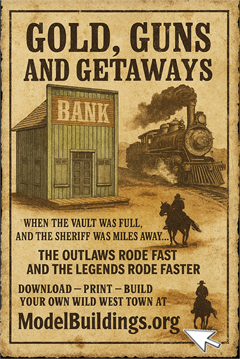Everything on model trains, model railroads, model railways, locomotives, model train layouts, scenery, wiring, DCC and more. Enjoy the world's best hobby... model railroading!
Keen Model Railroader Seeks Help With 6 Model Train Questions
Leon has six questions for readers to get their teeth into and asks:
Since I am about 60 years away from my first model train, which I am trying to put in operating condition, I have a lot of catching up to do on technical matters! Thus, a number of questions I would to put to experts of this day and age:
1. I have both an S gauge (American Flyer 302 locomotive) and O gauge (Lionel GP7 locomotive). Of course, they cannot run on the same layout. But, can I use the Lionel type 053 transformer (8-17 v. 60w.) for the AF loco , which runs with a 22034 transfo (7-16v)?
2. I also have a newer transfo (EHNO), with what seems to be an AC output of 20v. (0-18v.), and a DC output of 20v. ( 0-18v) : can I use this last transfo for my AF or Lionel trains, with which output?
3. I have an old Triang transfo with an output of 17.5v. AC: is this of any use for my AF loco?
4. What type of transfo do I need for a 2 train operation (AF locos only) ? Would the 60w. Lionel transfo be sufficient?
5. My Lionel loco has an insert compartment on the bottom for a battery: what does this battery operate? This loco also makes a loud buzzing sound: can I correct this?
6. What causes sparks between track and tender wheels for the AF locos? How can I get rid of them ?
To help Leon you can add your feedback using the green comments link below. It might be helpful if you refer to the question number when commenting or answering a question.
3 Responses to Keen Model Railroader Seeks Help With 6 Model Train Questions
Leave a Reply















Hi Leon,
Pheew you got problems…
not really. In MOST cases all of the voltages you are talking about given, ex: 1v to 20v, equipment should be able to operate safely between those voltages, because the transformer has I think they call it a (reostat?)in it and as you turn up the power you increase the voltage, that is what makes the loco’s go faster or slower. Amps only allows you to put so many locos or other electrical items on that transformer that total the total amount of amps per item at the same time, ex: 5 loco’s that have a draw of 5 amps each = 25 amps, that means if you have a 60 amp transformer you still have enough amps 35 amps left for other equipment, such as lighting and what ever, ex: 25 + 35 = 60. You should try to stay below the 60 amp mark so as not to over heat the transformer. This really should not be a problem depending on how much you plan to put in use at the same time. Heavy electrical loads play havoc on all equipment. Sooo all your transformers should be usable for your needs, that is to say if they are still putting out what they say they can and dont have damage due to storage problems. (dampness and the like)
Don’t exactly remember what the battery compartment was for but if it is a steam engine it might be the power to make the smoke and whistle work and or lights, try it. The loud buzzing sound could be low voltage, or the motor in the loco is old and needs to be cleaned or changed, I would run it as fast as you can for a while to hopefully get all the parts moving again, but a good cleaning of it and lubing the gears can’t hurt.
Who says you can’t run
S and O gage on the same layout as long as you dont cross tracks. That is your decision. When I was young and these things did not matter I actually ran 3 different gages on 8 X 16 layout. True now I only run 1 gage but who knows what the future will bring.
Sparking on the tracks, a little ok but if there is a lot, rust might be involved or other damage or pitting, you are talking about older equipment and the need to clean and oil every thing properly that needs it, to make good contact from the loco and track, this is electric we are talking about, good clean contact is very important with any electrical equipment (by the way this could be the cause of your loco humming).
Basically your problems can happen with any make or model of train. Hopefully this helps.
Tony P
Well done Tony. You have certainly put a lot of thought into answering Leon’s question. I’m sure he will really appreciate your input!!!
Thanks Tony P. Very useful.
Thanks to the blog. Also very useful.
Leon.